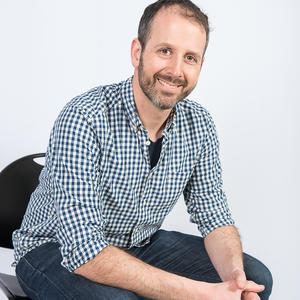Christopher Cully
PhD in Astrophysics University of Colorado, USA
Areas of Research
Space Physics
My research group studies charged particles and electromagnetic fields in Earth's upper atmosphere and the regions above known as the ionosphere and magnetosphere. We field and launch our own instruments, analyze data from ground-based, balloon-based and satellite instruments, and develop and run computational models. The ultimate goal is to better understand the near-Earth space environment.
My research group studies charged particles and electromagnetic fields in Earth's upper atmosphere and the regions above known as the ionosphere and magnetosphere. We field and launch our own instruments, analyze data from ground-based, balloon-based and satellite instruments, and develop and run computational models. The ultimate goal is to better understand the near-Earth space environment.
Space-based, balloon-based and ground-based instrumentation
We develop, field and launch new instruments for exploring near-Earth space. The current focus is on Very Low Frequency ground-based radio observations and on X-ray observations from stratospheric balloons.
We develop, field and launch new instruments for exploring near-Earth space. The current focus is on Very Low Frequency ground-based radio observations and on X-ray observations from stratospheric balloons.
Van Allen Radiation Belts
A major focus of our research is on the mechanisms that drive particle loss from the Van Allen radiation belts. These doughnut-shaped belts of high-energy particles episodically drain into Earth's upper atmosphere in an oval-shaped region that covers much of Canada; we want to understand why.
A major focus of our research is on the mechanisms that drive particle loss from the Van Allen radiation belts. These doughnut-shaped belts of high-energy particles episodically drain into Earth's upper atmosphere in an oval-shaped region that covers much of Canada; we want to understand why.
Wave-particle interactions
Earth's radiation belts are shaped and formed by the interaction between the high-energy charged particles and electromagnetic waves. We are using observations, modelling and theory to understand how this works.
Earth's radiation belts are shaped and formed by the interaction between the high-energy charged particles and electromagnetic waves. We are using observations, modelling and theory to understand how this works.
Ion outflow
The Earth is constantly losing atmosphere out into space. We examine the mechanisms that drive this outflow and its effects on near-Earth space.
The Earth is constantly losing atmosphere out into space. We examine the mechanisms that drive this outflow and its effects on near-Earth space.
Kinetic plasma theory
Much of the space environment exists in the plasma state: a hot gas where the atoms have been stripped of their electrons. The kinetic description of statistical physics provides a useful framework for describing how plasmas behave.
Much of the space environment exists in the plasma state: a hot gas where the atoms have been stripped of their electrons. The kinetic description of statistical physics provides a useful framework for describing how plasmas behave.
Spacecraft-plasma interactions
The plasma of the near-Earth space environment electrically charges spacecraft flying through it. Even minor charging can affect the ability to observe the plasma, while major charging events can damage and disable spacecraft. Using sophisticated numerical codes, we model these interactions to in order to predict, reduce and mitigate the effects.
The plasma of the near-Earth space environment electrically charges spacecraft flying through it. Even minor charging can affect the ability to observe the plasma, while major charging events can damage and disable spacecraft. Using sophisticated numerical codes, we model these interactions to in order to predict, reduce and mitigate the effects.
Supervising degrees
Physics and Astronomy - Doctoral: Accepting Inquiries
Physics and Astronomy - Masters: Accepting Inquiries
More information
Working with this supervisor
Although I have limited space in my group at the moment, I am always interested in enthusiastic students with good grades.
Contact this supervisor
Complete the following form if you are interested in working with this supervisor for your Graduate Program. All fields are required, unless indicated otherwise.
Collection of personal information
Your personal information is collected under
the authority of section 33(c) of the Freedom of Information and Protection of Privacy Act. If
you have any questions about the collection or use of this information, please visit our
Access to Information page.
